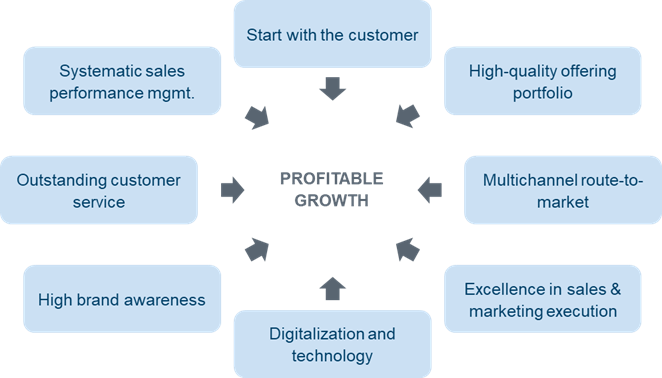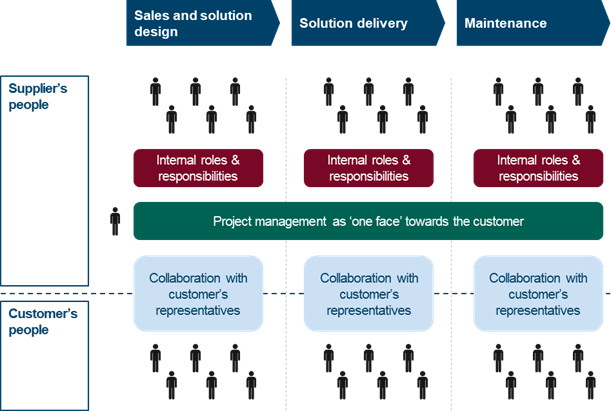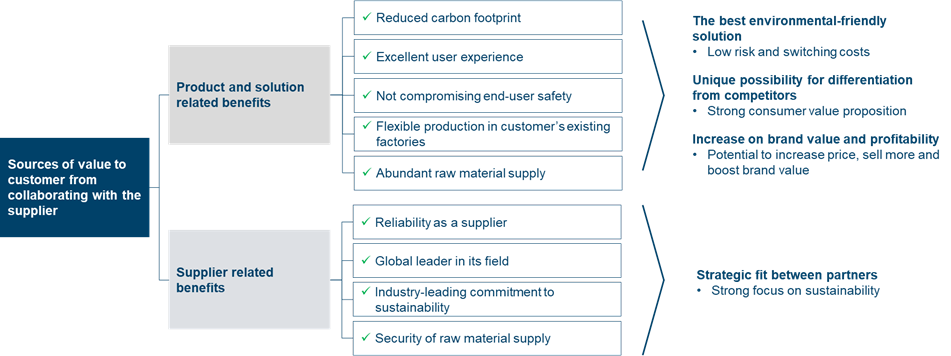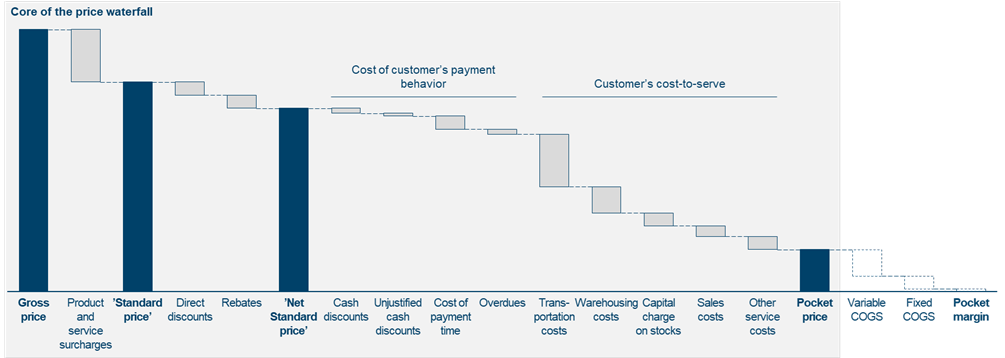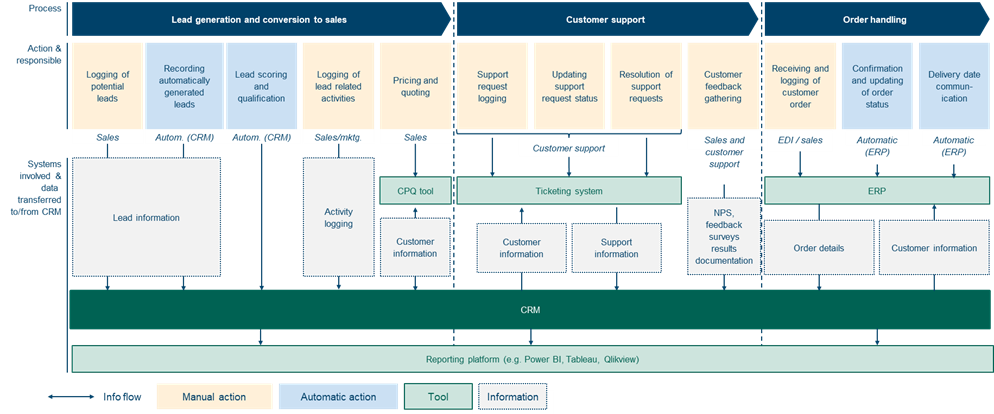Commercial Excellence and Profitable Growth
29.8.2025
Profitable growth is a significant driver of enterprise value. It is the elixir, the lifeline of all businesses. One might even call it the raison d’être of companies. The benefits of growth go also beyond shareholder value: growth enables societies to prosper and individuals to develop. Growth in one place fuels growth elsewhere.
However, achieving profitable and sustainable growth is not at all easy. For the past decade, Finnish companies have been struggling to find a recipe for profitable growth (see also August’s post ‘Board’s role in long-term value creation’). Finland has been, and continues to be, full of innovative companies, which are well-positioned to solve global challenges (e.g. related to sustainability); yet Finnish companies’ efforts to commercialize new business and offerings have not always succeeded. One potential solution: strengthened capabilities in commercial excellence.
Cornerstones of commercial excellence
Drawing from August’s vast experiences, we see five cornerstones in strengthening commercial excellence to drive profitable growth:
- Engage people with an inspiring and ambitious commercial vision
- Set up your organization for growth and customer centricity
- Embed ‘customer value mindset’ in all commercial processes
- Build transparency to sales performance and steer sales diligently
- Capture the full benefits from modern technologies
#1 Engage people with an inspiring and ambitious commercial vision
Companies and people need a North star to strive toward. An inspiring vision gives energy and encourages people to perform at their best. Growth does not happen by accident, but it is rooted in people’s strong will and commitment to succeed. Many of the commercial excellence transformations, which August has been supporting, have started by creating a compelling and ambitious commercial vision to engage people in the change and in growth initiatives.
For example, in a building materials company, which had suffered from stagnant growth for many years, August collaborated with the client’s senior leaders to build a vision that encapsulates all the success-critical elements needed to achieve profitable growth (see figure below):
The building materials company wanted to shift from a product-driven sales approach to a customer-driven approach, and this was also emphasized in the vision (‘Start with the customer’). Additionally, the company had evidenced shifts in customer behavior and the emergence of new sales channels. To succeed and grow in the future, the company needed to have a multichannel route-to-market strategy, which was also included as a critical element of the North star.
Figure 1: Example of a commercial excellence vision
#2 Set up your organization for growth and customer centricity
The second cornerstone of commercial excellence means implementing structures, roles & responsibilities and ways of working, which ensure high-quality customer experience. Customer centricity can be a double-edged sword, though: companies need to balance between ‘super-pleasing’ the customers and keeping the cost-to-serve in order. In the long run, bending over backwards to customers’ every wish can be costly.
As an example, an engineering & capital goods company wanted to improve its project delivery performance and customer centricity. The company had three challenges: 1) internal roles & responsibilities were unclear in different customer touchpoints, 2) the company did not have one face towards the customer during the project, and 3) collaboration with the customers’ representatives was sub-par in all touchpoints. The results of these challenges: poor customer experience and low project profitability. Together with August, the company designed a more customer-centric project delivery process and described in detail how to work at every touchpoint during the project to guarantee good customer experience as efficiently as possible (see figure below):
Figure 2: Drivers of customer centricity in different touchpoints
#3 Embed ‘customer value mindset’ in all commercial processes
Commercial excellence is about understanding the customers and the value that they are after. Through understanding the customer value, the supplier can design its offering optimally to fulfill customers’ needs, price the products and services to maximally capture customers’ willingness-to-pay, and promote the offering with compelling and differentiating messages.
In order to show and sell customer value, companies need a compelling customer value proposition. A raw material manufacturer, August’s client, had launched a new and more sustainable raw material innovation and wanted to create demand for it. The company and August designed a customer value proposition, which showcased the benefits of the new raw material related to reduced carbon footprint, increased brand value and profitability, and a strong value proposition towards the customers’ end-consumers (see figure below):
Figure 3: Example of a customer value proposition
#4 Build transparency to sales performance and steer sales diligently
Being able to see how sales is performing and having mechanisms to steer sales is also a part of commercial excellence. Sales steering practices contain target setting (e.g. targeted growth per customer segment), analytical account planning (e.g. actionable plans per key account), and follow-up of results (e.g. profitability development per customer). These practices should be properly placed in the annual sales management clock and carried out diligently.
‘Pocket price’ metric is an effective way to enforce accountability for the financial performance within an organization and to follow up on actual results. As an example, a process industry company wanted to improve transparency by introducing a pocket price waterfall, which would clearly show the contribution of different factors to each customer’s profitability (see figure below):
Figure 4: Example of a pocket price waterfall
#5 Capture the full benefits from modern technologies
Lastly, modern technologies can immensely improve the efficiency of commercial activities. Today, there are a host of new AI-driven solutions to support tasks such as pricing decisions. Typically, however, the first step for many companies is to start getting the full benefits out of the already existing tools and systems within the company.
A building materials company had observed that it had used CRM only for logging in leads and customer visits. There was a lot of hidden potential in using the CRM and the information it contained particularly in pricing, customer support activities, and order handling. Thus, together with August, the company defined and implemented practices to utilize their CRM more holistically during the commercial lifecycle (see figure below):
Figure 5: Example use-cases for CRM
Synthesis: Gearing commercial excellence towards profitable growth
To what extent are the cornerstones of commercial excellence in place within your company? Achieving profitable growth might require a holistic commercial transformation (including organization redesign, capability uplift, and implementation of new tools), or growth can be unlocked through step changes in one or two ComEx cornerstones (e.g. value-based pricing practices).
Regardless of your company’s situation, we encourage everyone to critically evaluate the current commercial practices and mirror those against the set growth ambitions – are you well-equipped to deliver profitable growth, or is there still room to further boost your commercial excellence?
Juha Martikainen, Partner +358407564686 firstname.lastname@august.fi

